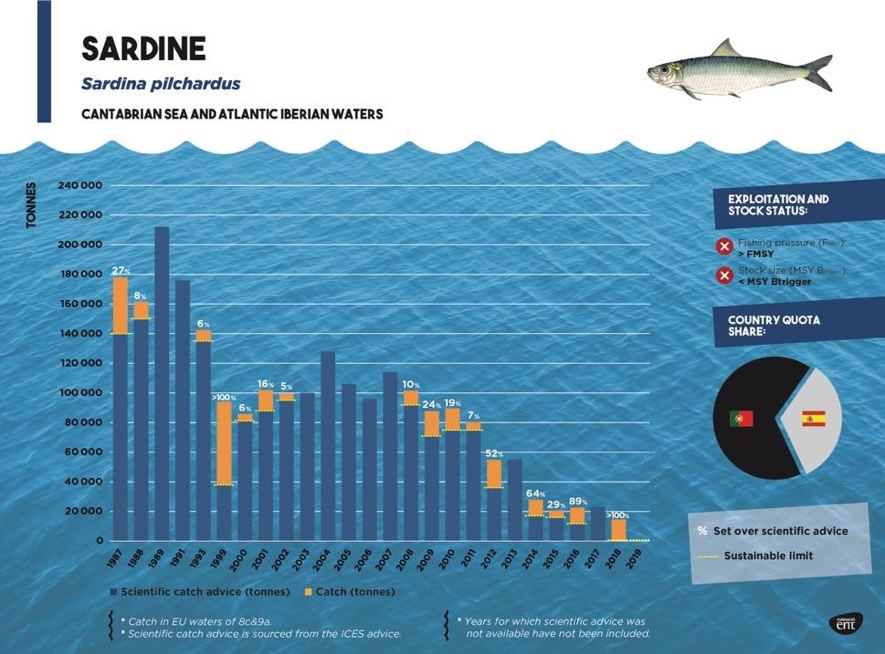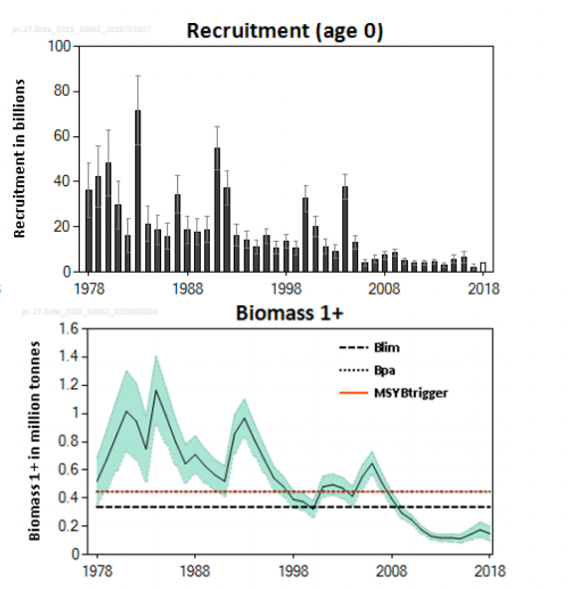In a letter to the European Commission, Spanish and Portuguese governments twelve environmental organisations have detailed the mismanagement of the Iberian sardine stock (Sardina pilchardus).

Scientific data show that the Iberian stock has been in a pattern of continuous decline since the 1980s and that since 2009 it has been below safe biological limits (SBL = F>Fpa or B<Bpa). This level of overfishing impairs the ability of the stock to replenish itself. In 2017 recruitment, the number of fish surviving to maturity, was the lowest recorded.
The signatories to the letter have witnessed the mismanagement of the stock and provide a detailed list of demands, including that the stock is rebuilt “above levels which can produce the maximum sustainable yield”. This is in line with the Common Fisheries Policy (CFP) legislation adopted in 2013 but as yet not implemented.
Moreover, the organisations call for the adoption of a Long Term Management Strategy, investment in marine research institutions in order to improve their capacity to collect and process scientific data, that the most up-to-date recommendations of the ICES are followed, and for “urgent and serious investment…for the fisheries sector, which go beyond granting subsidies”.
While the stock continues to be mismanaged, with a lack of effective control of fishing activities, there is little hope for the stock to recover. However, the CFP provides the tools and legal obligations for governments and the EU to ensure that fishing is sustainable once the biomass of the stock has grown to levels above the maximum sustainable yield (Bmsy).
The latest ICES advice for the stock was that “there should be zero catches in 2019” when the MSY approach is applied, however, the fishery has remained open this year. The biomass of the stock has experienced a sharp decline, from nearly 650,000 tonnes in 2006 to less than 150,000 tonnes in 2018.

In response to the crisis facing the stock, Portugal and Spain have submitted a proposed management plan but this falls far below the ambitions laid out in the CFP. The Plan’s objective is “a probability ≥ 90% that the stock biomass will be equal or above 80%of Blim by 2023”.
ICES have been requested to evaluate the proposed management and recovery plan and replied in May this year stating that new reference points are required as the stock “has been in a state of low productivity since 2006”. They have therefore recalculated the values of Blim to 196,300 tonnes (down from 337,448 t) and Fmsy is now 0.032 (from the previous value of 0.12).